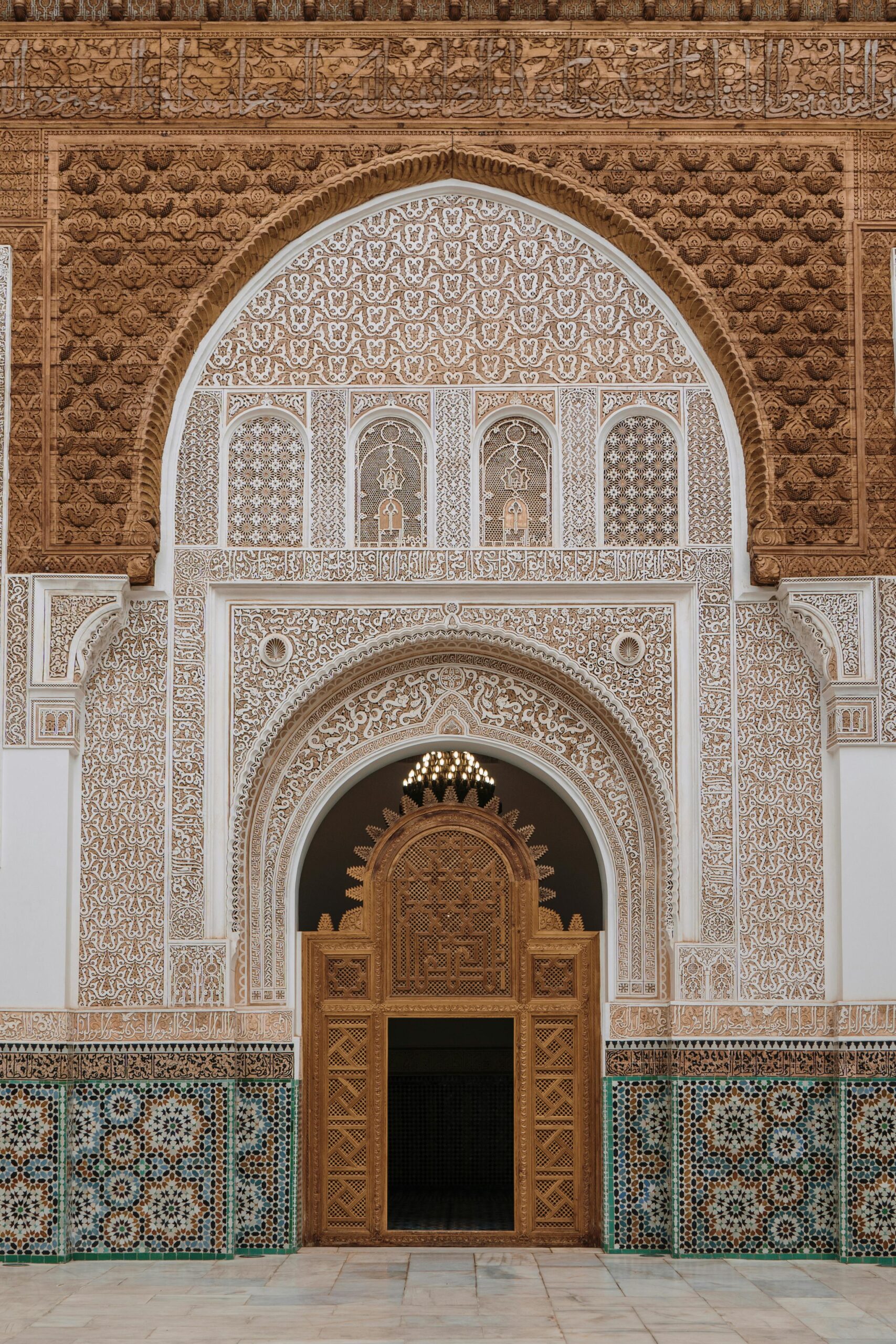Increasingly popular as a destination, Marrakech offers its visitors a journey through desert landscapes, captivating culture, and exceptional cuisine. The city boasts numerous points of interest, with its abundant sunshine often captivating the hearts of its visitors.
To aid in organizing your stay in Morocco, this article provides an overview of things to do in Marrakech, ranging from must-see attractions to more unusual visits.
Key Attractions in Marrakech:
Marrakech hosts a plethora of attractions. However, the city’s surroundings also offer much to explore, encouraging visitors to venture off the beaten path. Here’s an overview of the best things to do in Marrakech:
Exploring the Medina of Marrakech: The Medina is an essential stop during a visit to Marrakech. Situated in the city’s historic heart, it is inscribed on the UNESCO World Heritage List. This locale seamlessly blends tradition and history, featuring numerous monuments to explore, including the Koutoubia Mosque and the Bahia Palace.

Strolling through the narrow alleys, sampling local delicacies, bargaining in the souks, and relaxing at café terraces to observe local life are highly recommended activities. Additionally, indulging in a traditional Hammam experience is a perfect way to immerse oneself in local culture.
Bahia Palace: Dating back to the 19th century, the Bahia Palace spans 8 hectares and stands as one of the finest examples of Moroccan architecture and Islamic art. A cultural gem of the city, it offers visitors a captivating experience, with intricate details, frescoes, and mosaics showcasing rare beauty.
Souks of Marrakech: Dating back to the city’s foundation, Marrakech’s souks are among Morocco’s most beautiful traditional markets. These labyrinthine passages host thousands of artisans daily, offering a sensory overload of colors and aromas. Notable souks include those specializing in carpets, jewelry, leather goods, spices, and cookware. Bargaining is customary and adds to the local charm; failure to negotiate may result in inflated prices.
Majorelle Garden: Located in the new city, Majorelle Garden has become a must-visit attraction in Marrakech. Once owned by the renowned Yves Saint-Laurent, it serves as a tranquil oasis, housing numerous botanical species from around the world. The garden’s main house, painted in vibrant royal blue, is a highlight of the visit.

El Badi Palace: Built in the late 16th century to commemorate the defeat of the Portuguese, El Badi Palace’s immense ruins signify the site’s historical significance. Comparable to iconic sites like the Roman Forum in Rome or the Acropolis in Athens, it offers an unmissable glimpse into Moroccan heritage.
Ben Youssef Madrasa: Madrasas, Islamic educational institutions, hold cultural significance in the Muslim world. Marrakech’s Ben Youssef Madrasa, built in 1565, stands as the largest in Morocco. A visit here provides insight into theological studies and architectural marvels.

Jemaa el-Fna Square: As one of the most visited squares in Marrakech, Jemaa el-Fna sees over a million tourists annually. While essential to a city visit, caution is advised due to potential scams. However, the square’s unique blend of tradition and modernity offers a memorable experience. Exploring Moroccan street food and local specialties is highly recommended.
Koutoubia Mosque: Commissioned by the Almohad caliph Abd al-Mu’min in 1140, Koutoubia Mosque is renowned for its towering minaret, offering sweeping city views. While access to the mosque’s interior is limited, its exterior remains a captivating sight.
Saadian Tombs: Constructed in the 16th century, the Saadian Tombs offer a stunning glimpse into Moroccan history and culture. Adorned with colorful mosaics, architectural details, and imposing sculptures, these tombs are integral to the Kasbah Mosque, one of the country’s oldest mosques.
Palmeraie of Marrakech: The Palmeraie, an oasis just a short distance from the city, boasts over 100,000 trees across 15 hectares. Popular tourist activities here include camel rides and quad biking.

Kasbah of Marrakech: As the city’s historic district, the Kasbah offers a more authentic experience compared to the Medina. Visitors can explore traditional restaurants, markets, and small shops here, alongside landmarks like the Royal Palace and the city’s second-largest mosque.
Overnight Desert Experience: A trip to Marrakech provides an opportunity to explore the Agafay Desert, just 40 minutes from the city center. Activities here include buggy rides, dining under Berber tents, camping under starlit skies, and horseback riding.
Atlas Mountains Excursion: Less touristy than the Agafay Desert, the Atlas Mountains offer breathtaking landscapes and picturesque Berber villages. Day trips from Marrakech typically include visits to these villages and scenic viewpoints.
Ouzoud Waterfalls: Listed as a UNESCO World Heritage Site, the Ouzoud Waterfalls rank among Morocco’s most beautiful attractions. Towering over 110 meters, these falls cascade into a scenic pool. While swimming is prohibited, visitors can take boat tours for a closer look.

Dining in Marrakech: Marrakech boasts a diverse culinary scene, offering an array of flavors and colors. While three days may not suffice to explore the city’s gastronomic offerings fully, notable dining establishments include Comptoir Darna for its dance performances, Entrepotes for tapas, and Nomad for rooftop dining.
Recommended Itinerary for Three Days in Marrakech: Visiting Marrakech over three days is manageable, given the city’s compact size. Here’s a suggested itinerary:
- Day 1: Begin with Koutoubia Mosque, then explore the Medina, including Jemaa el-Fna Square and the souks. Enjoy lunch at a central restaurant, followed by visits to Bahia Palace and Ben Youssef Madrasa.
- Day 2: Start with a stroll through Majorelle Garden, then head to the Kasbah for Saadian Tombs and El Badi Palace. Conclude the day with another palace visit, such as Palais Badi.
- Day 3: Venture beyond Marrakech to explore the surrounding areas, opting for an activity like a desert excursion, Atlas Mountains tour, or visit to Ouzoud Waterfalls.

Transportation in Marrakech: For exploring the city center, walking is the best option, as the Medina is compact and easily navigable. Taxis are convenient for trips outside the city walls, such as to Majorelle Garden. However, negotiating fares is essential, or requesting metered fares to avoid overpaying.
Marrakech welcomes visitors year-round, although July and August can be extremely hot. Ideal times to visit are between March and June, or September and November. Additionally, it’s advisable to avoid visiting during Ramadan, as many sites and shops may be closed during the day.
Marrakech beckons travelers with its allure of exotic sights, sounds, and flavors, promising an unforgettable journey into the heart of Morocco. Whether exploring ancient palaces, bargaining in bustling souks, or savoring traditional delicacies, every moment in Marrakech is a testament to the city’s timeless charm and enduring mystique. So pack your bags, embark on an adventure, and discover the magic of Marrakech for yourself.






